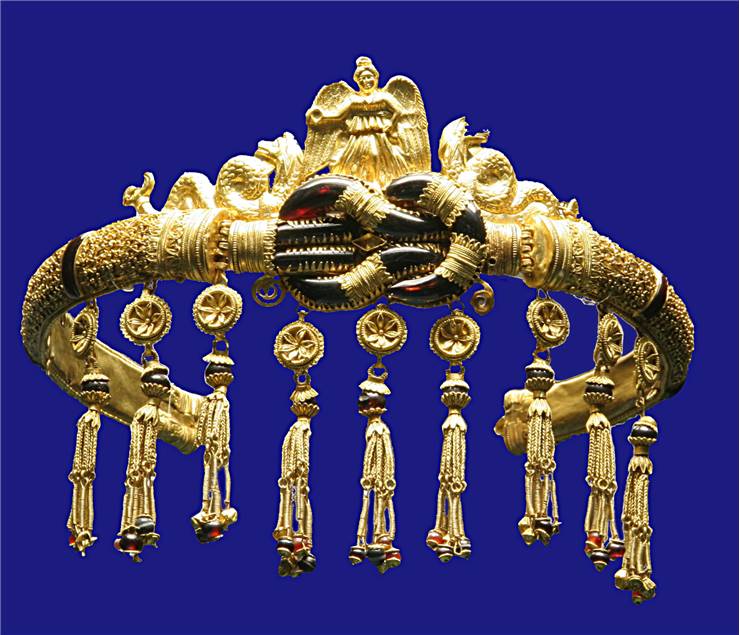History of Ancient Greek Jewelry
Even before the arrival of metallurgy to the Greece and surrounding areas, these territories produced constant stream of simple stone, clay and bone decoration items. After the arrival of Bronze Age, Greeks began creating more and more complicated designs eventually producing jewelry that reflected the wealth and power of nobility and rulers. Jewelry in ancient Greece was viewed as a symbol of power, social status, ward against evil, celebration of the gods and was most often used by female members of wealthy class. Even though they received techniques for making gold items from the nearby kingdoms of Egypt and Mesopotamia around 3 thousand years ago, they managed to retain they unique style that was remain unchanged in the centuries that followed.
Development of great Greek Mycenaean civilization brought the first great rise of jewelry use. Gold became primary decorative raw material, although silver, lead, bronze and various alloys were also used. Carefully crafted rings, necklaces and pendants were some of the most known jewelry types from that period. Sadly fall of the Mycenaean civilization brought three hundred years of "dark ages" where culture, technology and entire Greek society almost collapsed. This period finally ended with the coming of Golden Age of Greece when their culture blossomed and enabled advancement of jewel making technology to the next level. Use of molds and thin leafs of gold enabled Greeks to manufacture some of the most beautiful pieces of antique jewelry that are preserved today, and regarded as the masterpieces of highest order. The most popular gemstones were amethysts, pearls, chalcedony, cornelian, garnet and emeralds.

Hellenic period and arrival of Alexander the Great brought influx of gold, precious gems and oriental influences to the Greece, but the fall of the Greece under the control of Roman Empire in 2nd century BC brought many drastic changes to their style of jewelry making. Influences of Christianity and formation of Byzantine Empire enabled the renaissance of their style, spreading of high quality jewelry and great regard toward the skilled jewelers. Sadly even those styles reached its end after conquer of the Greece by Turkey, and eventual independence gained in 1827. By then, clashes of styles that raged in their culture brought the destruction of many ancient works of art that were melted and modified to look more in line to the new modern European style.

